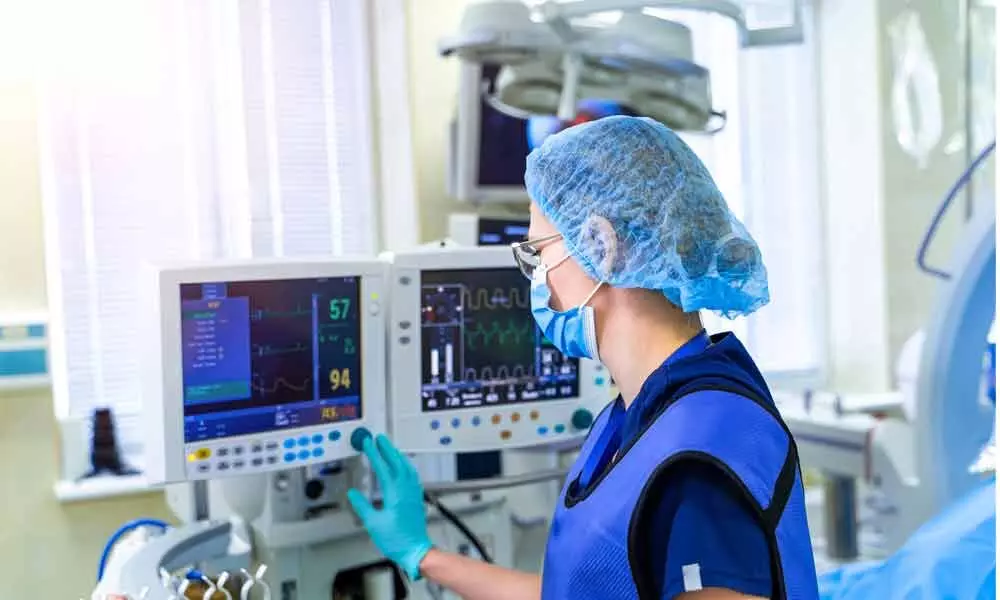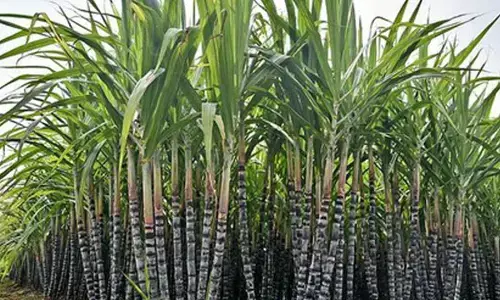Prevent Covid spikes with increased ventilation and reducing crowds

Prevent Covid spikes with increased ventilation and reducing crowds
The Covid spread occur mainly in the indoor poorly ventilated spaces with crowding including offices, cars, buses, malls, gyms, hospitals etc.
The Covid spread occur mainly in the indoor poorly ventilated spaces with crowding including offices, cars, buses, malls, gyms, hospitals etc. The indoor air quality in such spaces needs to be improved by ventilation and allowing fresh air. Specific interventions are needed for air conditioning especially with regard to increasing the air changes per hour to take in outside air more frequently. The CO2 could act as a proxy for estimating the level of aerosols. If CO2 levels are above 1000 ppm then immediate measures have to be taken to ventilate and take in more outside air. If the indoor air reeks of body odours, perfumes, garlic and tobacco odours then it implies that the air is high in aerosols and one needs to avoid and evacuate from such spaces
The Covid surge in India has reached alarming proportions in the second wave with unprecedented case and mortality numbers. The variants and double mutant that are more transmissible and cause severe disease are said to be fuelling the massive spurt. The spread of Covid as per the WHO and several health organisations is fomites, droplets, aerosols and close contact. However dominant transmission is via aerosol route as the recent review article in The Lancet by Jose Jimenez et al has reiterated. Looking at several cases around the world including the Church choirs, bars, gyms, hotels, restaurants and contact tracing data prove beyond doubt that aerosol transmission is the main route of spread. The famous Science Journal study by Laxminarayan et al on Andhra Pradesh and Tamil Nadu based on the contact tracing data has pointed out that the shared transportation was the major contributor in the first wave.
The latest CDC advisory has stated that the transmission by fomite is very low and that it is unnecessary to concentrate on obsessive cleaning of surfaces. However, the aerosol transmission route was very well studied during the first wave around the world and were covered in several science journals like Nature, The Lancet etc. It is high time we focus on the aerosol transmission and devise methodologies to reduce the infections.
The droplet are defined as aqueous particles containing virus, saliva and mucous emitted from the respiratory tracts of the patients and usually more than 100 micrometers wide. The droplets fall to the ground with gravity. The aerosols are fine respiratory virus particles along with envelope emitted from the pharynx of the Covid patients when they cough, talk, sing or breathe. The particles up to 100 micrometers wide and linger in air for hours unlike the droplets. It is high time we address the aerosol transmission and prevent the surge of cases in India.
The Covid spread occur mainly in the indoor poorly ventilated spaces with crowding including offices, cars, buses, malls, gyms, hospitals etc. The indoor air quality in such spaces needs to be improved by ventilation and allowing fresh air. Specific interventions are needed for air conditioning especially with regard to increasing the air changes per hour to take in outside air more frequently. The CO2 could act as a proxy for estimating the level of aerosols. If CO2 levels are above 1000 ppm then immediate measures have to be taken to ventilate and take in more outside air. If the indoor air reeks of body odours, perfumes, garlic and tobacco odours then it implies that the air is high in aerosols and one needs to avoid and evacuate from such spaces.
The corridors, common areas and elevators in high rise apartment buildings are dark and narrow harboring aerosols. It is advisable to avoid such spaces and to wear a mask. The ventilation in the common spaces has to be improved by opening windows and using industrial grade fans. The capacity limits have to be fixed in elevators. It has to be borne in mind that aerosols linger in the air even when the patient has left.
The aerosol spread in the cars, buses and shared transportation need special attention. It is imperative that the drivers and passengers wear masks and open windows especially when they are not from the same household. The outside air mode has to be switched on instead of recirculation mode. The epidemiological studies on buses in China has proved that recirculated air was the reason behind the spread in the bus among passengers who were sitting few aisles away.
In India AC luxury buses are widely used it is imperative that more outside air be pulled.
The crowding in indoor spaces have to be reduced. The number of people attending the weddings, parties and functions have to be restricted. To aid people to remember and watch out for aerosol transmission and to avoid SSE, we propose a Triple A (AAA) D system.
Area: Avoid crowded spaces with too many people hanging around
Activity: Minimise talking, singing, shouting, exercise and dancing in crowded areas
Air quality: Avoid places with poor ventilation, high carbon dioxide (CO2) concentration and little air circulation, especially when air reeks of body odors or strong smells, including those of garlic, tobacco or perfumes
Duration - Do not spend long time in the above situations .
We need to understand the spike in Covid is primarily because of aerosol transmission of virus from patients to people and that the outdoor spaces are better than indoors. We can prevent the spikes with increased ventilation and reducing crowds in indoor spaces where the rate of viral transmission is very high.
(The authors are Chief Scientist, CSIR-IICT, Hyderabad, retired Professor, Dept. of Chemistry, Osmania University, Hyderabad and an IT Professional in Boston, USA respectively.)
Dr K Nagaiah, Prof G Srimannarayana and Phaniraj G
















